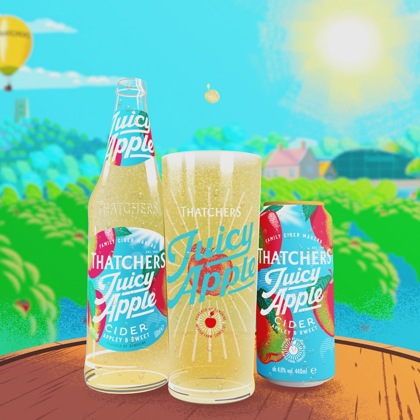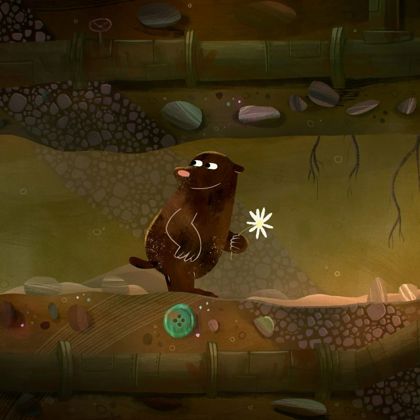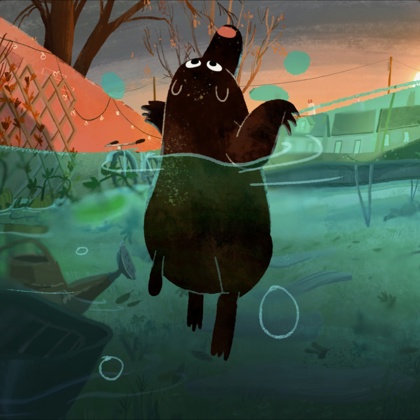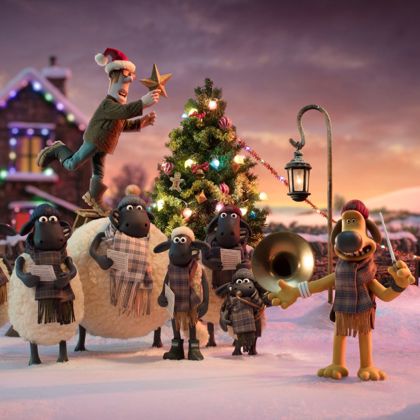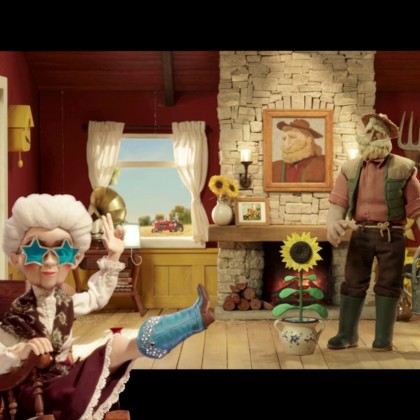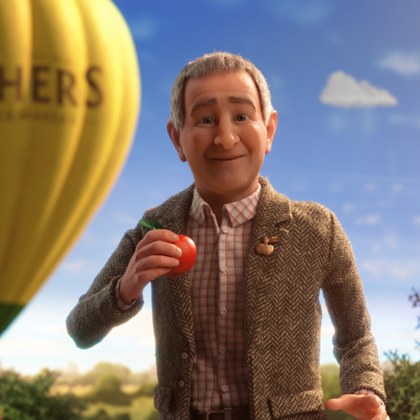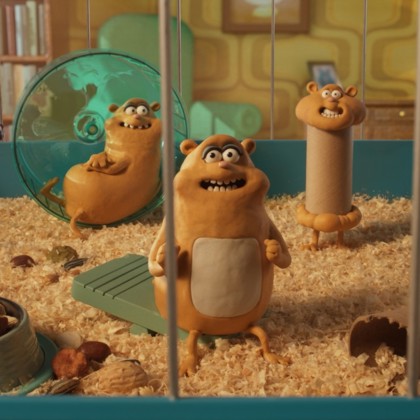SLIME. SLOW MOTION. THE BBC
Of all the things a filmmaking project can be, any one of them would make it a dream job. How excited do you think I was when I got to make something with all three of those magic ingredients!?
The project was to be a part of the huge re-brand of BBC Two, replacing the truly iconic idents with a whole host of new ones, adhering to a newly-developed graphical system that made the ‘two’ front and centre of every ident.

Creative agency Superunion devised and developed the ‘system’ which placed the curve of the number 2 in the middle of the screen. This was coupled with a highly detailed schematic of exactly when, and on what frame number, the two sides of the screen would meet to reveal the iconic ‘two’. To make matters more complicated, at certain frame numbers, the idents would hard cut from one film to another, seamlessly, so it was absolutely essential that each ident stuck to these rules as otherwise they the whole concept simply wouldn’t work. Those specifics excited me; coming from a graphic design background, I love a ruleset or a creative constraint to work within, it makes it even more challenging!
My idea in the original treatment was simply called ‘squish’; it was to use a real material, on a real set, squished together, to reveal the magical ‘two curve’, in-camera. Now, remember when I said “ I love a ruleset or a creative constraint to work within”, I clearly hadn’t throught that through when faced with the challenge of making a real material; slime, move in a specific way and to work on specific timings! But more on that later.
We kicked off with some R&D time, research and development. It’s a funny way to start the filmmaking process, as usually, especially in animation, you’ll begin with a script or an animatic, but because our film existed *somewhere* in the magic moment of manipulating a slimy material, we had to first figure out what that material would be.

It needed to be magic, really. It needed to be not liquid but not solid. Malleable but not too much. Not too shiny, not too matte. So into the studio I went, armed with tubs and pots of all sorts of things; Slime, modelling clay, gels, play-doh and more. Once, through rigorous testing let me tell you, we’d established that it was slime that gave us that magic middle ground, it was then whittling down exactly what type of slime did the job. All different brands, all different types, all different recipes for making my own. Some stuff was terrible (my own recipes), some stuff was terrific, but in the end we settled on a specific brand that seemed to strike the balance just right. It was wobbly and wavey, and as soon as it moved you could see that energy work it’s way through the slime in a lovely, organic way.
It was an six-year-old’s dream job. Left alone, for hours, playing with all different types of slime. In fact, we had a few visitors to the studio who brought their kids around, and they simply couldn’t believe that it was actual work work I was doing! I feel that on a daily basis.
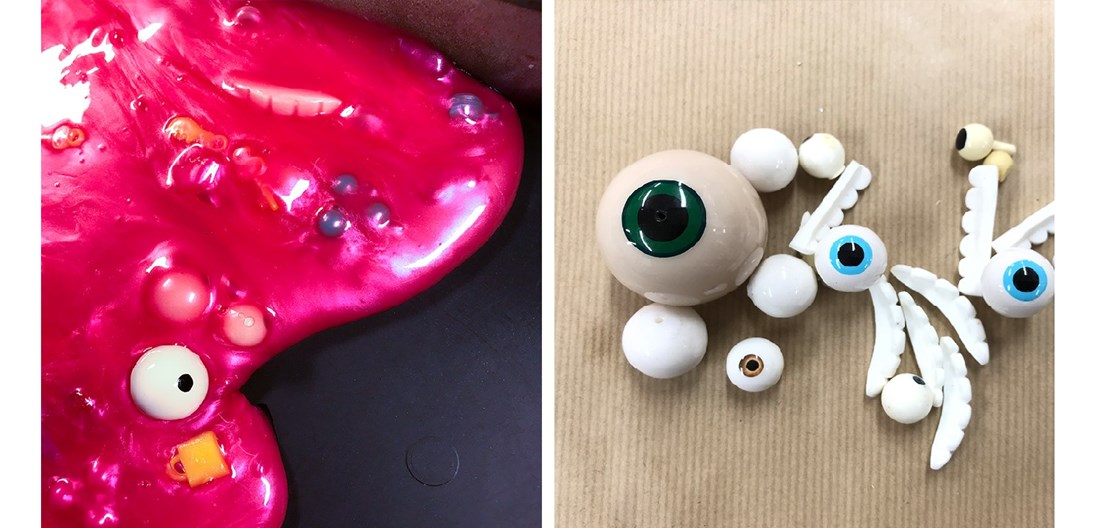
Selecting the slime was the easy bit, making it do what we wanted to however, wasn’t so simple. As the ‘two curve’ was the crucial part of the ident, we knew that would be the constant in our frame, it would be firmly rooted in the middle of the frame, and it’d be about us manipulating the slime in frame and out of frame, to make the magic ‘two curve’ complete and meet the required match cuts.
One way we knew we’d have more control was in the sheer number of frames. We knew that if the material itself wasn’t going to give us too much control on when we could hit the necessary frame counts, well then we’d need to have more flexibility in the frames themselves. That’s why we shot the whole thing on a high-speed camera, a Phantom Flex. That meant we could shoot at 1,000 frames per second, giving us the freedom to speed up to real time but then back down to 1,000fps, which is forty times slower than real life! This was also an aesthetic choice too, the slime being ‘squished’ in real time which then ramps down into super-slow-mo gives a lovely look, and really lets you see the organic swells and squelches in detail.
We experimented with dropping the slime, pushing the slime, rolling the slime and squeezing the slime, but after that initial movement, we were then at a loss for how you continue to manipulate it without getting your hands in shot (as, don’t forget, we had to be able make the slime hit certain frame numbers to match cut to the other idents). Even though those the different methods for introducing the slime looked fantastic through the lens, they wouldn’t let us solve the puzzle of making a complete ident, so we went back to the drawing board.
Through lots of experimentation with our studio and production team, and through collaboration with Superunion and BBC Creative, we hit upon the ‘penny shuffle’ idea. That being, manipulating the base that the slime was on, rather than the slime itself. Enty, our head of model making, built a rig that held a precise ‘two curve’ in the middle of our camera frame, with the left and right side of the base on rails that let us slide them back and forth, like a penny shuffle!
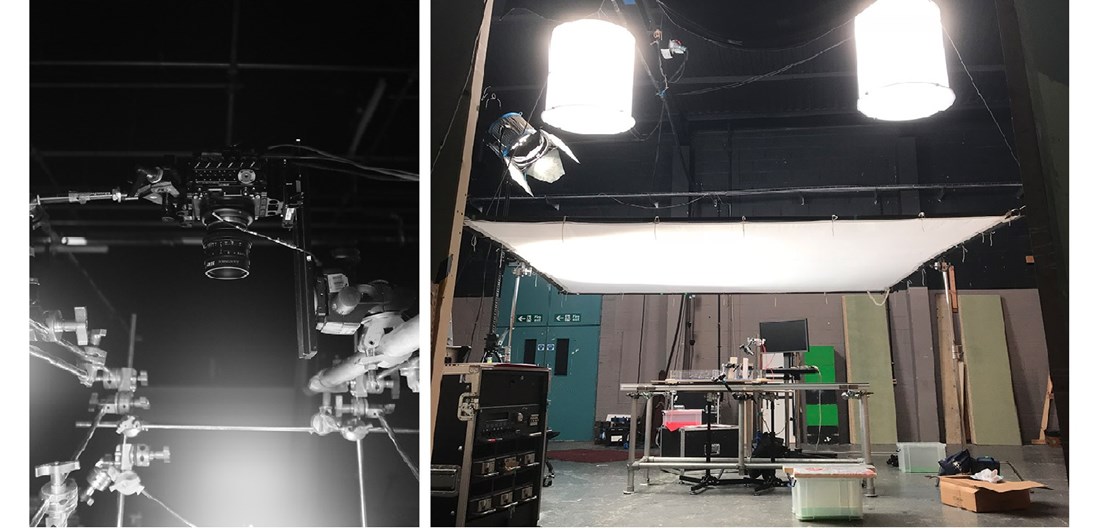
The last piece of the puzzle was adding the character to our slime. That was done, quite simply, with your bog-standard hand-puppeteered magnetically-controlled googly eyes. Ha! I kid, that was a feat of engineering, again by our model maker Enty. He cut open a pack of googly eyes, replaced the pupil with a thin sheet of magnetic plastic, then ‘puppeteered’ the pupil by holding a very small magnet on a rod underneath! Our original plan was to move the eyeballs at the same time as manipulating the slime, embedded in it, but because we were shooting at 1,000fps, that meant the eyeball movement simply didn’t register. So what we did was keep regular googly eyes in the slime as it moved and undulated within the swirling swamp, and then we digitally replaced them with the ones where the pupils moved, which we shot on green screen.
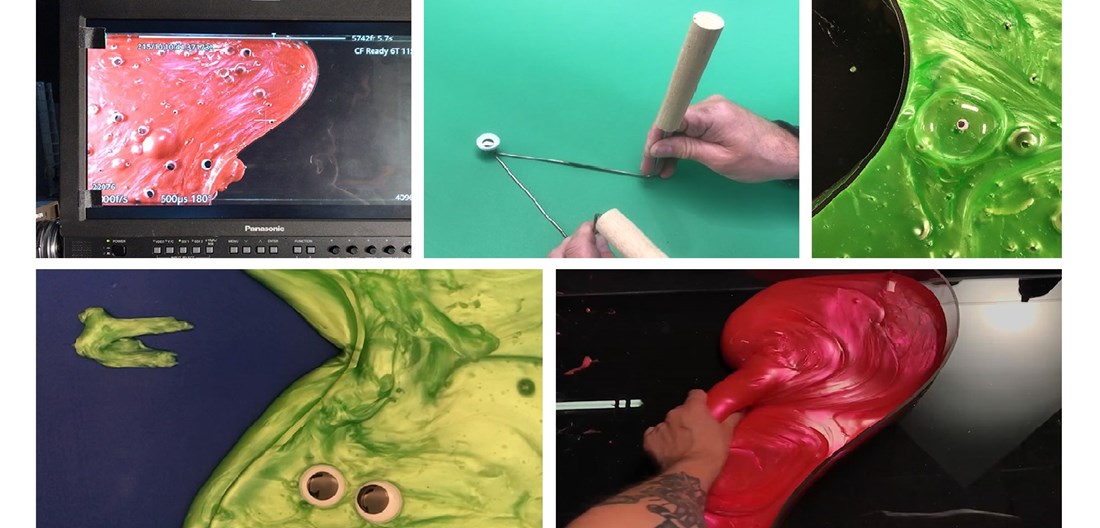
So after shooting many, many different takes of sloshing and squishing the slime together on our high-speed camera, we combined all of it together to assemble our ident. We chose the best takes, we replaced the eyeballs with the animated versions, we slowed stuff down and sped stuff up, we nipped and tucked at the slime and worked with our excellent VFX team to sprinkle the magic on the slime to make the ident that you see before you!
It was a wonderful process. It was exciting, exhilarating, scary and confusing. We never knew if something would work, and more often than not, it didn’t. But, when you did have those fleeting moments where all the elements came together, it really felt like magic. That was exactly the reason we made ‘squish’ the way we did – those unpredictable elements made us all step up and literally think outside the box to dream up ways to make this happen. It was a truly collaborative project, with so many brilliant brains helping to make this simple idea come to life, and, most importantly, believing in it when it wasn’t behaving itself.

Now, if you’d like to see a bit more of a glimpse behind the scenes, then why not pop the kettle on, put your feet up and check out our short edit below:
It really was a dream project, and something I’m immensely proud to have worked on. If I could go back 30 years and tell six-year-old me that it’d be my job to make something fun, silly and entertaining with goopy slime, my tiny mind would have exploded. That’s something I never take for granted.
I have the best job in the world.
Gavin Strange
DirectorGavin is a Director and Designer at Aardman. Working at the studio for over a decade, Gavin’s creative output ranges from title sequences for the OFFF festival and Shaun the Sheep Movie: Farmageddon, to channel idents for BBC Two and Christmas films for Fortnum & Mason.




